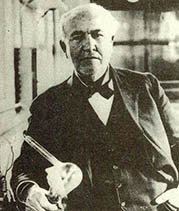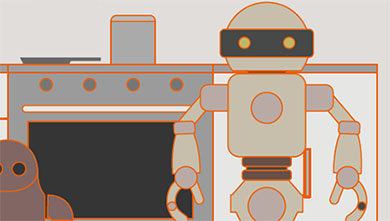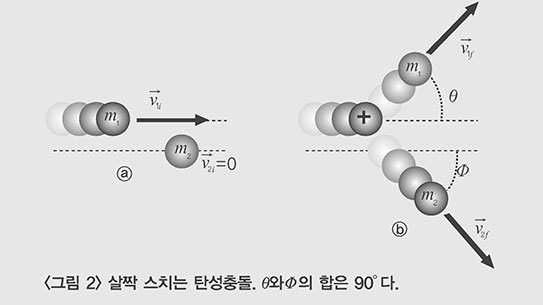인구가 너무 밀집되어 땅값이 성층권으로 치솟고 있는 일본은 밑으로 즉 지하로 이동하려는 생각을 하고 있다. 이들은 지하 하수 시설, 지하 철도, 나중에는 지하도시 건설에 착수하려는 계획을 하고 있는 것이다.
실제로 이것은 그리 터무니없는 것은 아니다. 우리는 이미 지하철이라는 지하철도를 가지고 있지 않은가. 뉴욕과 같은 도시들은 전선, 하수도, 가스본관 등등의 지하세계를 갖고 있다. 겨울이 길고 몹시 추운 북쪽 도시들에서는 지하 상점가를 세우려하며 그것들은 그 자체로 가치가 있을 것이다.
지하에서 살려는 생각 두더지차럼 땅속을 파고들어 대기와 하늘로부터 자신을 분리시키려는 생각은 불유쾌하게 느껴질지도 모른다. 그러나 잠시 멈추어 그에 대해 생각해본다면 지하에서 사는 것이 더 많은 잇점이 있을 수도 있다.
첫째로, 날씨는 더이상 중요하지 않게 된다. 왜냐하면 날씨는 본래 대기현상이기 때문이다. 비, 눈, 진눈깨비, 안개등이 지하세계를 애먹게 하지 않을 것이며 심지어는 온도변화조차도 개방된 지면에만 국한되고 지하에는 존재하지 않을 것이다. 밤이건 낮이건, 여름이건 겨울이건, 아열대이건 극지방 주변이건간에 지하온도는 화씨 55도에서 60도 근처에 있게 된다. 너무 추울 때 이를 덥히거나 또는 너무 더울때 식히기 위해 지상에서 사용될 많은 양의 에너지가 절약될 수 있게 되고 날씨가 사람과 건물에 주는 피해도 사라질 것이다. 지진조차도 지하에서는 5분의 1정도 피해밖에는 되지 않을 것이다.
둘째로, 자방시(時)도 중요치 않게 된다. 태양이 지나가면서 다른 장소, 다른 시간에 밤낮이 오는 횡포가 사라질 수 있다. 외부적으로 초래된 낮이 없는 지하에서는 일하고 놀고 자는 선택이 자신에게 알맞게 조정될 수 있다. 적어도 사업이나 공동노력에 관한한 전세계가 어디에서나 같은 시계소리를 들으며 일을 시작하고 마치는 8시간 교대체를 할수 있겠고 이런 일은 자유로이 이동할 수 있는 사회에서는 중요하다. 동서에 걸친 장거리 항공운행에서도 더이상 시차로 인한 폐단을 낳지 않을 것이다. 만일 뉴욕을 정오에 떠나 도쿄까지 12시간이 걸린다면 그곳 시간은 한밤중일 것이고 또 역시 우리 자신들의 생물학적 시간으로도 한밤중일 것이다.
세번째로, 지구의 생태학적 균형도 더욱 좋아지게 된다. 인간은 어느 정도 지구의 방해물이 된다. 이것은 단지 자리를 차지하는 막대한 수의 인구뿐만 아니라, 우리 자신들과 기계들을 수용하며 또한 운송 통신 휴양을 가능하게 하기위해 짓는 건물들이 너무 많다는 것이다. 이러한 것 모두가 많은 동식물의 자연서식를 빼앗는 결과가 되어-때로는 부산물로서 쥐나 바퀴벌레와 같은 소수종들에겐 이것이 유리하나 야생을 파괴한다. 사람과 그 건축물들이 땅속 생명체의 영역인 지하로 더 많이 옮겨갈수록 이 지구위엔 다른 종류의 생명체들을 위한 공간이 더 많이 생길 것이다.
네번째로, 자연이 더 가깝게 다가올 것이다. 지하로 들어가는 것이 자연으로부터 멀어지는 것처럼 보일지 모르지만 과연 그러할까? 대부분 창문도 없고 인공적으로 공기가 조절된 도시의 빌딩안에서 많은 사람들이 일을 하고 있는 지금보다 지하로 가는 것이 더욱 완전하지 않을까? 창이 있다 하더라도 다른 빌딩들을 제외하고 눈에 보이는 것이 무엇이 있는가?
어떤 이들은 심리적인 차이가 있다고 주장할 른지 모른다. 현대 도시들이 자연과 분리되어 있다 하더라도 창밖을 바라보거나 문밖으로 나가면 우리는 태양과 하늘이 보이는 곳에 있게 된다. 그것이 옳은 말인가?
그렇지만 이런 방식으로 살펴보자. 도시를 떠나 푸른 초목과 손상되지 않은 자연이 있는 실제 지역에 도달하기 위해서 뉴욕이나 런던, 도쿄 시민들은 처음엔 시내 포장도로에서 다음엔 교외로 불규칙하게 뻗어나간 격심한 교통난을 뚫고 몇마일, 몇시간 동안을 수평선상에서 여행하여야만 한다.
만일 우리가 지하에서 살고 있고 지하문화를 영유한다면 우리가 도시안 어디에 있든지간에 도시의 꼭대기, 몇백 야드 올라간 그곳이 바로 전원이 될 것이다. 승강기만 타고 올라가면 자연의 세계가 있게 되며 지하 세계 주민들은 오늘날 지표위의 도시주민들보다도 더 좋은 생태학적 조건하에서 더 많은 초목을 볼 수 있게 된다.
그리고 한가지 더 지적하자면 날씨 변화가 없는 날이 지속되는 지하세계에서 걷는 일은 더욱 즐겁게 될 것이라는 점이다. 비교적 짧은 거리 사이에 운송시설을 사용할만한 이유가 적게 되어 에너지를 절약하고 신체건강을 증진시킬 것이다.
지하생활에서 불이익이 있겠는가? 조금은 있을 것이다. 막대한 자본투자와 심리적 적응이 있어야만 할 것이다. 거대한 환풍처리가 필요하다는 문제가 있을 것이도, 물론 개방된 곳보다 동굴안에서 더 위험도가 커지게 되는 화재문제도 있다.
그런데 나는 전적으로 공정한 관찰자는 아닌 것이, 공교롭게도 난 페쇄된 공간을 좋아한다. 지난 1953년 나는 완전히 지하도시로 건설된 지구를 묘사한 '강철의 동굴'이란 제목으로 소설을 쓴 적이 있다.
Japan, overcrowded, with land-values climbing into the stratosphere, is thinking of moving underneath-below the ground. They are planning to begin with underground sewage plants, then underground railroads, finally underground cities.
It's not so unthinkable, actually. We have underground railroads called "subways." Cities like New York have a subterranean world of electrical wiring, sewer lines, gas mains, and so on. In northern cities with long, harsh winters, there is a tendency to build underground shopping malls, veritable cities in themselves.
The thought of living underground, of burrowing in the earth like moles, of separating one's self from the air and sky may seem unpalatable, but if we stop to think of it, there can be many advantages to living underground.
First, weather would no longer be important, since it is primarily a phenomenon of the atmosphere. Rain, snow, sleet, fog would not trouble the underground world. Even temperature variations are limited to the open surface and would not exist underground. Whether day would not exist underground Whether day or night, sum-temperatures underground would be in the neighborhood of 55 to 60 degrees F. The vast amounts of energy now expended in warming our surface surroundings when they are too cold, or cooling them when too warm, could be saved. The damage done by weather to humanity and its structures would be gone. Even earthquakes would be only about a fifth as damaging beneath the surface.
Second, local time would no longer be important. The passage of the sun, the tyranny of day and night coming at different times in different places can be avoided. Underground, where there is no externally produced day, the alternation of work, play and sleep can be adjusted to suit ourselves. The whole world could be on the same stroke everywhere, at least as far as business and community endeavors are concerned. This could be important in a freely mobile world. Air transportation over long distances, east and west, would no longer entail jet lag, If we leave New York at noon and take 12 hours to get to Tokyo, it will be midnight there, and midnight for out own biological clock, too.
Third, the ecological balance of the Earth would be better off. To a certain extent, humankind encumbers the Earth. It tis not only our enormous numbers that take up house ourselves and our machines. to make possible our transportation, communication and recreation. All these things disturb the wild, depriving many species of plants and animals of their natural habitat-and sometimes, as a side consequence, favoring a few others, such as rats and roaches. The more of ourselves and our works we place underground, below the realm of burrowing life, the more room there will be on the planet for other forms of life.
Fourth, nature would be closer. It might seem that to withdraw underground is to withdraw from the natural world, but would that be so? Would the withdrawal be so much more complete than it is now, when so many people work in city buildings that are often windowless and artificially conditioned? Even when there are windows, what DOES THE EYE BEHOLD, is some places, but other buildings?
One might argue that there is a psychological difference. However divorced present-day cities may be from nature, we are in view of the sun and the sky, by looking out the window or by stepping out the door. Isn't that right?
But look at it this way. To get away from the city now, to reach real tracts of greenery and of reasonably unspoiled nature, a New Yorker, a Londoner, a Tokyoite must travel horizontally for miles and hours, through heavy traffic-first across city pavements, and then across suburban sprawls,
If we were living beneath, if we had an underworld culture, the countryside would be right there, a few hundred yards above the upper level of the cities-wherever you are within them. The world of nature would be an elevator ride away, and the dwellers beneath would see more greenery, under ecologically healthier conditions, than dwellers of surface cities do today.
And remember, as one more point, that in an underground world of perpetually equable weather, walking would be much more pleasant. There would be less reason to use transportation facilities for short hauls, thus conserving energy and increasing bodily fitness.
Are there disadvantages to life underground? A few. There would have to be a huge capital investment, a great psychological of the vast ventilation procedures that would be necessary and, of course, the danger of fire-which may do more damage in the caverns than in the open.
By the way, once again I am not a totally dispassionate observer; I happen to like enclosed spaces. Back in 1953, I wrote a novel titled "The Caves of Steel" in which I described an Earth made up entirely of underground cities.
(c) 1989, Los Angeles Times Syndicate
이 기사의 내용이 궁금하신가요?
기사 전문을 보시려면500(500원)이 필요합니다.
1989년 07월 과학동아 정보
🎓️ 진로 추천
- 도시공학
- 환경학·환경공학
- 건축학·건축공학

















